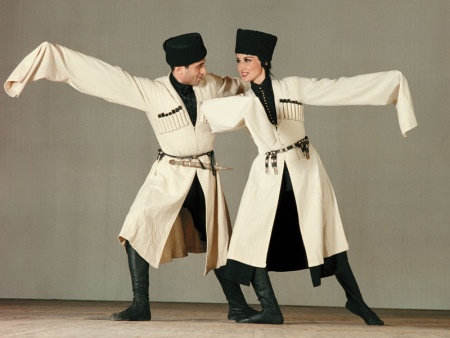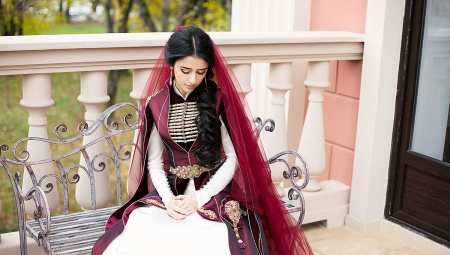The history of the national costume of Georgia
The traditional costume of the Georgian people takes its start in the 9th century. It was during this period during the time of the Khazar Khaganate that the outer clothing of the Caucasian peoples appeared under the name Chokha, which translates from Turkic languages as “cloth, cloth for clothes”. Such outerwear was common among both men and women, and was worn year-round.
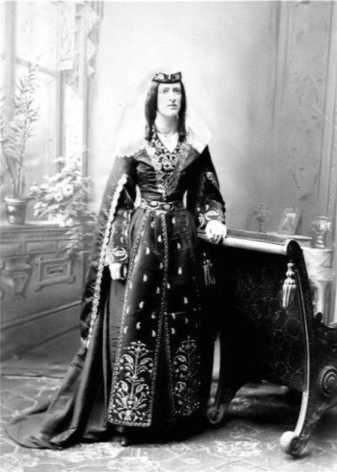
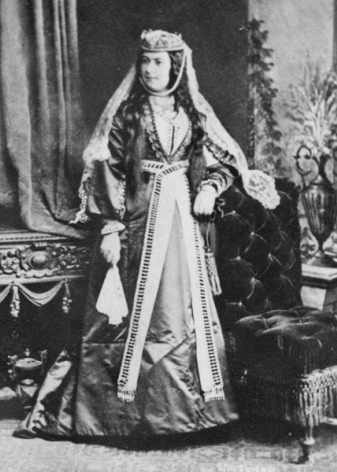
It is difficult to judge the appearance of the national costumes of Georgians of that time, as well as other Caucasian peoples, since no exact descriptions of the clothes of the inhabitants of the Caucasus have been preserved.
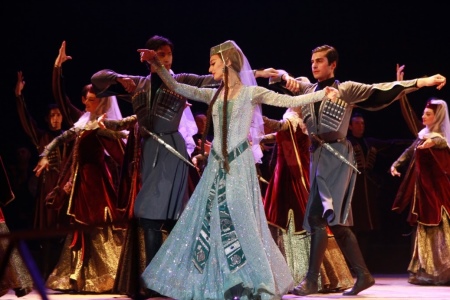
It is noted that until the beginning of the 19th century, the Chokha had a looser style. Over time, the costumes became more closed and strict, gained a tight-fitting silhouette, gradually expanding from the waist.
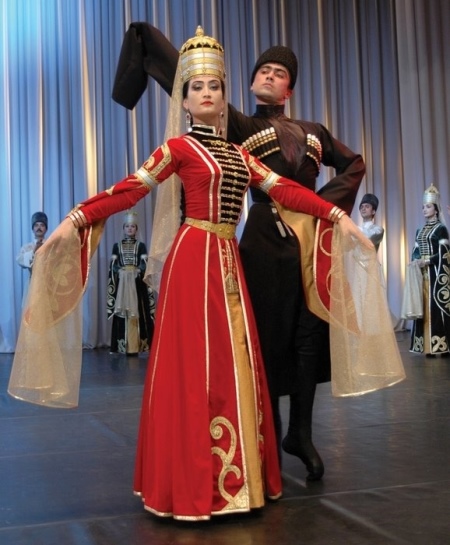
A distinctive feature of the Georgian costume is the presence of gas holes on the chest on both sides. Such a name are special breast pockets, which have small compartments for storing powder charges - gazyry. These pockets appeared on the outer clothing of Georgians not so long ago with the proliferation of firearms. Initially, ghazyrs were stored in bags over the shoulder or on the belt, but later, for convenience, such pockets were invented, which became a characteristic feature of the Georgian costume.
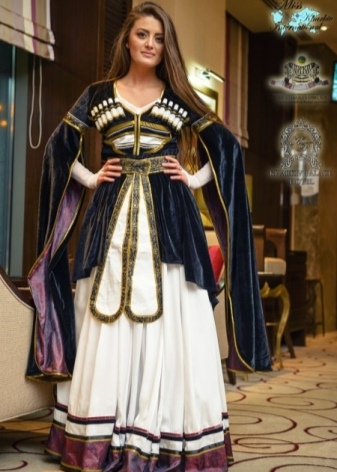
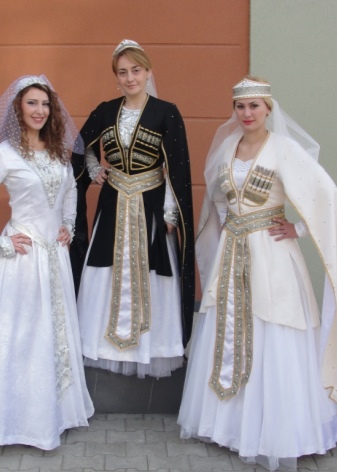
The Georgian national costume in the modern world plays an important role in various celebrations that require respect for the traditions of their people. At the beginning of the last century, traditional clothing in Georgia, as in many other countries, began to fade into the background.Young people preferred elegant and slightly elaborate national costumes to simpler and more comfortable clothes. However, today many young people and girls are happy to wear modern clothes with traditional Georgian motifs as a sign of respect and reverence for their people.
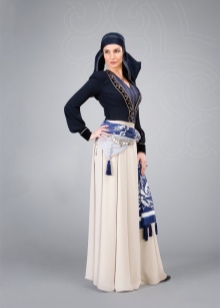

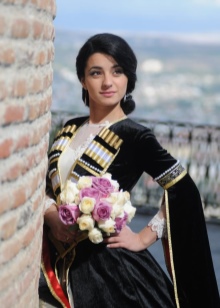
Description of features
Color spectrum
6 colors of chohas are characteristic for Georgian national clothes.
The purple color of the costume is quite attractive for modern tourists, the locals like black and white dresses. In addition, there are still suits of gray, blue and burgundy colors.
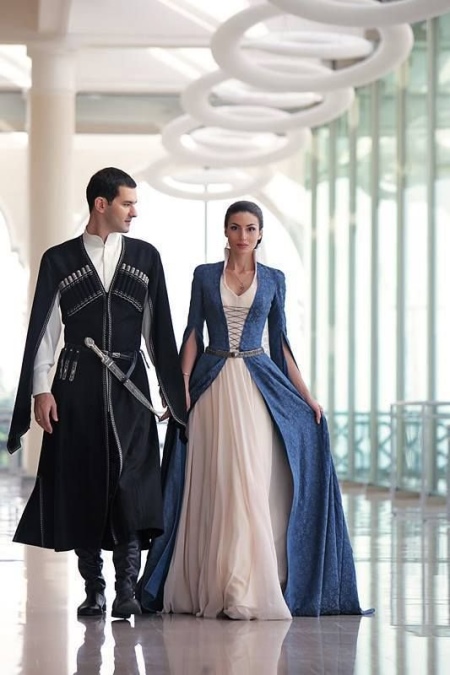
Black color in clothes was the prerogative of noble people. Wealthy people wore black clothes not only in everyday life, but also preferred it for special occasions.
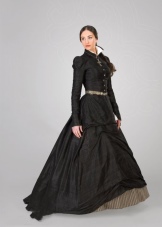
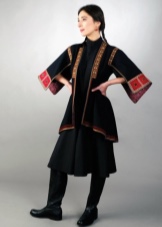
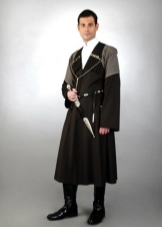

Features of cut and decor
Regardless of gender and social affiliation, the Georgian costume looks quite strict, but at the same time elegant. The fabrics were chosen quite strong and durable. Wealthy people could afford silk and velvet suits. Decoration for such luxurious outfits for the warm season could be lace, in the colder months - noble furs.
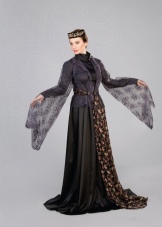
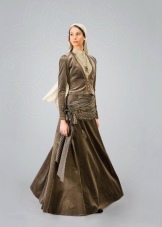
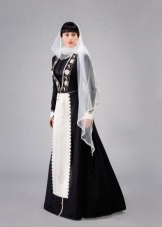
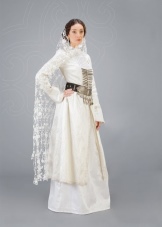
At all times, the bride’s wedding outfit was especially luxurious. Although outwardly he was similar to an everyday women's costume, the wedding dress was always sewn only of white fabric. An important component was the precious decor of clothing for the bride.
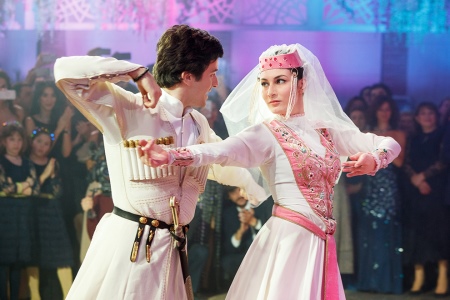
Wedding dresses were embroidered with gold or silver thread, and also decorated with various applications. Regardless of the financial situation of the family, the bride's outfit should have looked rich.
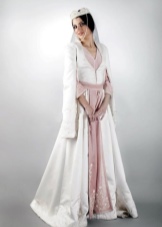
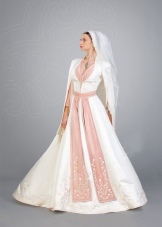
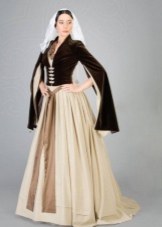
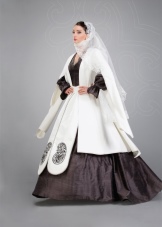
A national velvet headdress with a light scarf was put on the bride’s head, with which the bride covered her face.

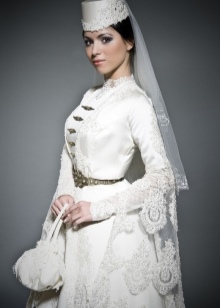
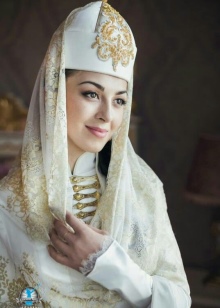
Women's Georgian costume
The Georgians, who wore the traditional costumes of their people, looked quite elegant even in everyday life. The dress called kartuli, although hiding the legs of women, had a rather tight-fitting style in the upper part. The corset part of the dress was decorated with various decorative elements. It could be braid or embroidery with beads and stones.

In addition to the dress, the women's outfit necessarily assumed a belt. It could be silk or velvet. The belt was also decorated with original decorative embroidery or pearls and tied so that all its charm fell along the female silhouette and was in a conspicuous place.
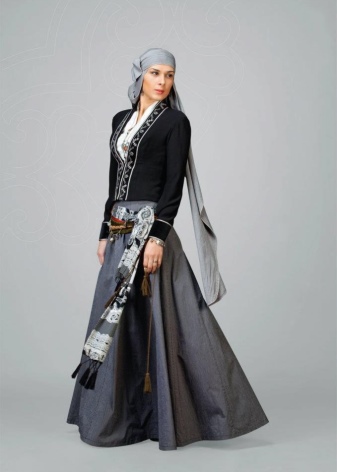
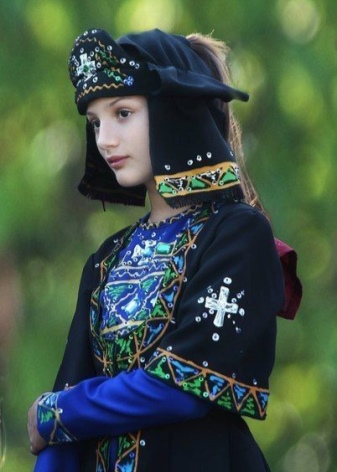
For women from wealthy families, dresses were made from expensive fabrics that were specially brought from afar. Silk and satin national women's costumes looked chic and luxurious
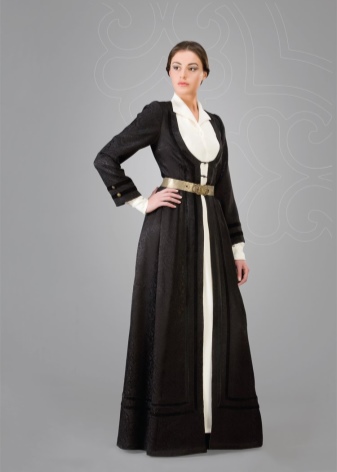
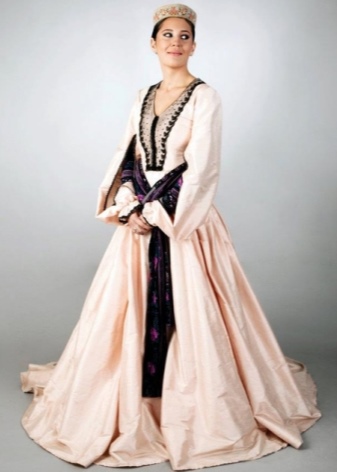
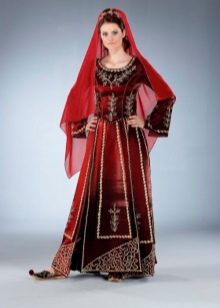
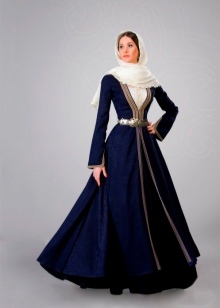
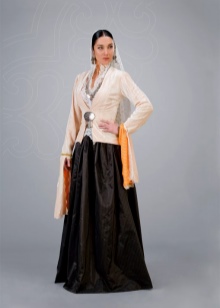
Outerwear of Georgians is called katibi. It was usually sewn from velvet and silk fabrics of bright colors, natural fur or cotton wool was used as a heater, the lining of such clothes was made silk.
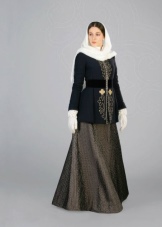
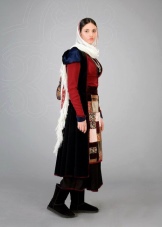
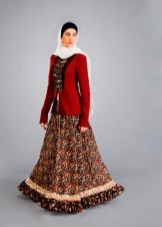
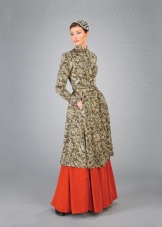
As a headdress, women used a thin veil called lechaki. The fabric on the head was fixed with a silk roller of mine, stuffed with cotton wool, as well as the rim of the chiata from cardboard, covered with velvet fabric. On top of the entire structure, a veil was put on, which was later replaced by a scarf called Baghdadi.
As shoes, women from simple families wore hard leather boots called kalamani. For women from noble families there were velvet shoes with heels and no backs. The noses of such shoes called koshi were bent up.
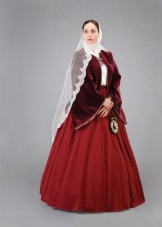
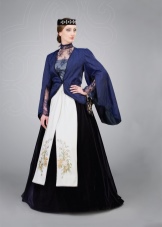
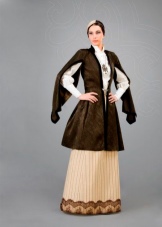
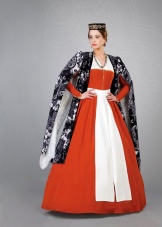
Natural stone products such as coral and amber were widely used as jewelry. Women's hairstyles consisted of interweaving braids and curls that covered the temporal part.
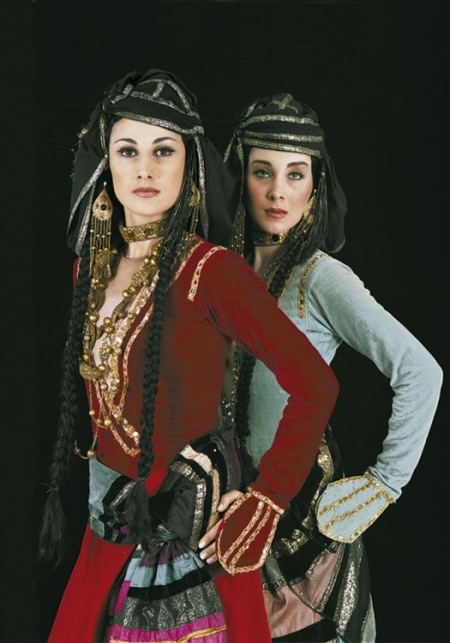
Georgian women also widely used blush and henna for coloring eyebrows, nails and palms, which was very fashionable.
Children's costume in Georgia
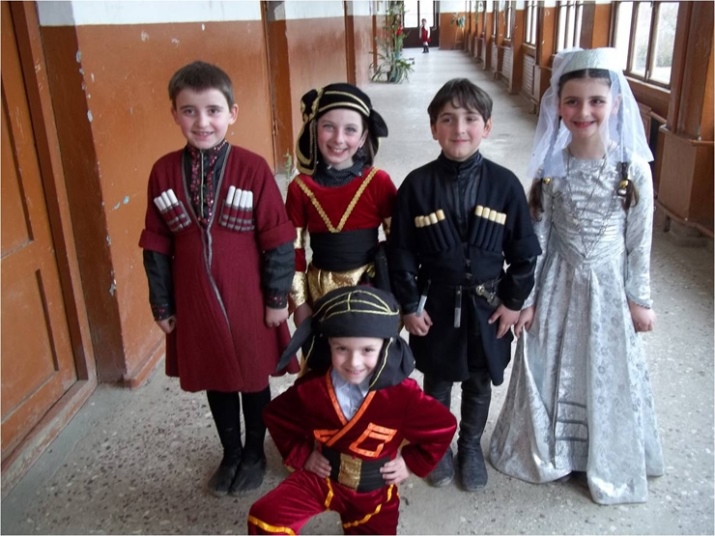
The national costume for the girl was sewn in the likeness of a women's outfit, but without excessive luxury.
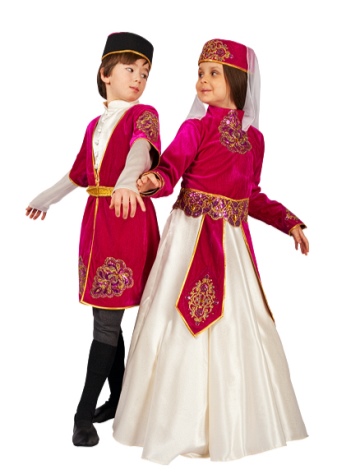
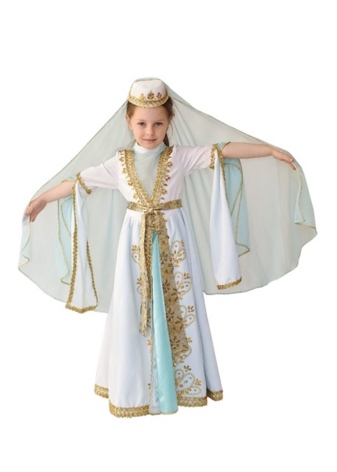
Since the children are very active, more shortened versions of the costume were allowed for added convenience. The color scheme could also differ from the monotonous adult clothes and complemented by bright shades.
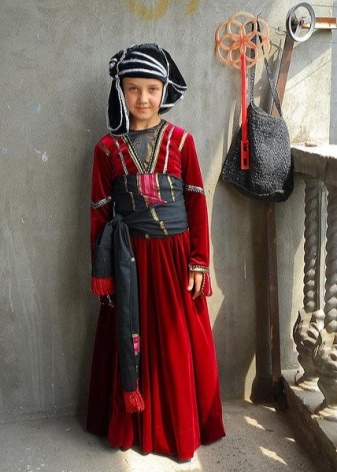
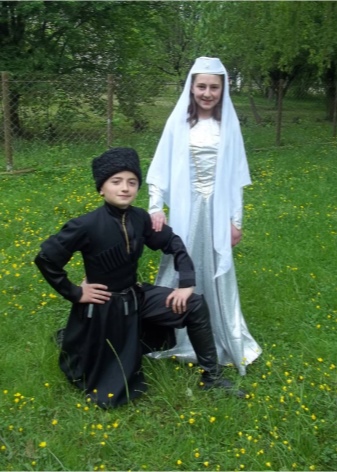
For boys, they also sewed costumes in the likeness of men.

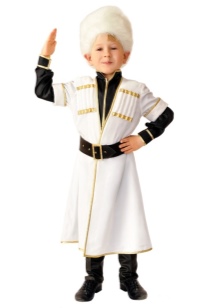
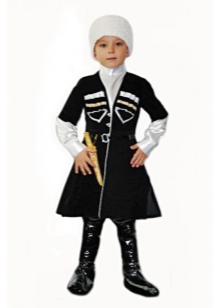
Men's costume Georgians
The traditional Georgian costume consisted of lower shandisha pants and upper trousers or scarves made of black or burgundy fabric, which did not hamper the movement. They put on a shirt called peranga from above.


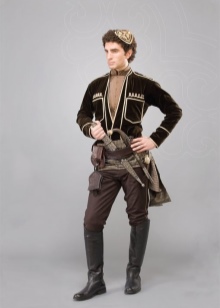
Outerwear was selected in accordance with the season and social status and was divided into several types:
- Cherkesska or as it is called Georgians Chokha. This item of men's wardrobe was considered mandatory at any time of the year. Circassia was worn over a caftan and belted with silver or ordinary metal embossed belts. In this case, the belt performed not just a decorative function, on it men fastened a dagger or saber, which were also part of the national costume of the Georgians.
The characteristic colors for this garment are black, brown and gray, and there are also white and blue chohas.
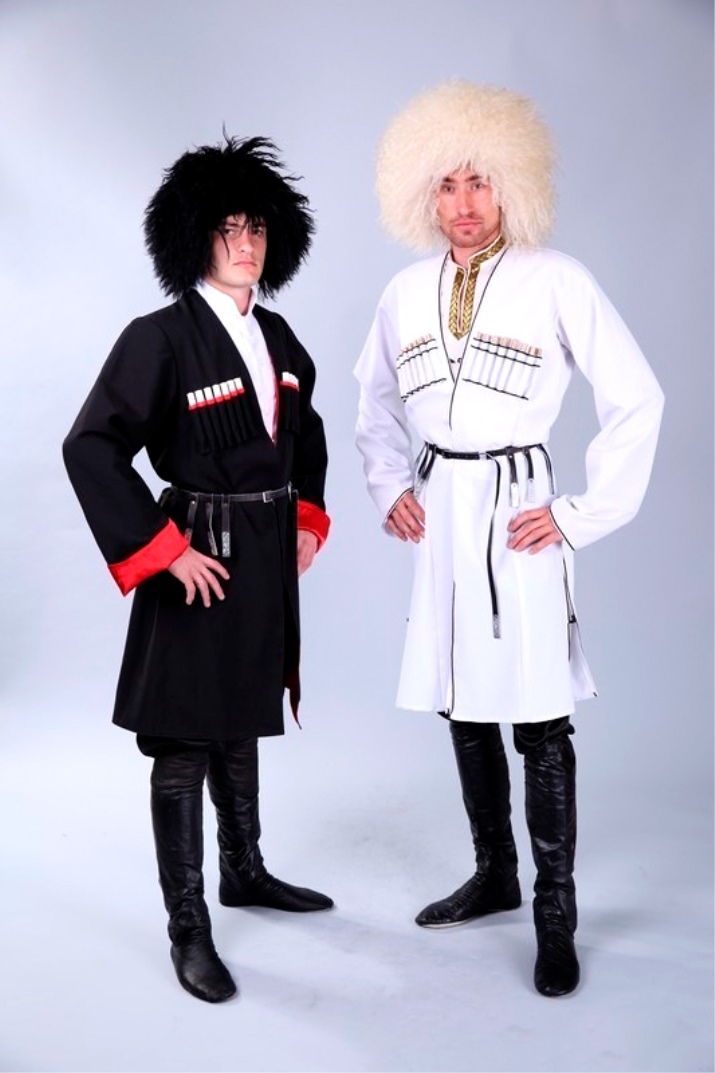
Initially, this outerwear was made from sheep or camel hair. Today, lighter fabrics such as cotton are used. The length of the Circassian is usually just below the knees, the cut is quite loose, but emphasizing the male silhouette. Chokha has fasteners from the top to the waistline. On the chest are pockets for storing gunpowder, which today distinguish the Georgian costume from the rest.
Usually, the Chokha does not have a collar, but in some variations a stand-up collar may be present. The sleeves of these clothes are usually wide and up to the elbow, which allowed them to move freely during the battle. For older people, long sleeves at the chokha were acceptable. Today there are various types with different sleeve lengths.
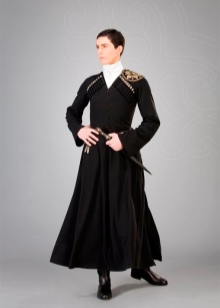
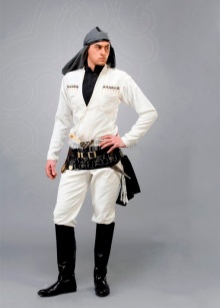
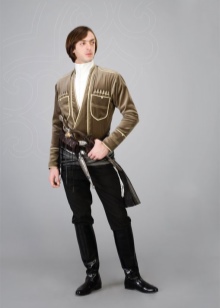
- Kaba. Wealthy people from noble and princely families wore this kind of outer clothing, sewn from silk of dense structure. To finish the kaba, a black silk cord was used, from which clasps were also created.



- Kulaja. This item of men's wardrobe intended for immigrants from the nobility for special occasions. Kulaja was a dress of short length, which was worn over clothes. Velvet of various colors was used for sewing formal dresses. Natural fur could be used as decorative elements. They always wore a karaul hat with a kulaja.
- Trigger and Pabadi. For the winter months, Georgians used the trigger. She was a fur coat, which was decorated with embroidery with gold and silver thread. Pabadi was also worn in the cold season.


This name was given to the sleeveless cloak, which was made from felt with goat hair.

Such clothes of white, black or brown color are also called burka. In the winter months, his head was covered with a hat, which was sewn from astrakhan or sheepskin.
In addition to the hat, which is characteristic of the highlanders, the Georgians wore other hats depending on the geographical location. So, in different regions they also wore felt caps, and a cap called cabal akhi, and even caps with small brim.
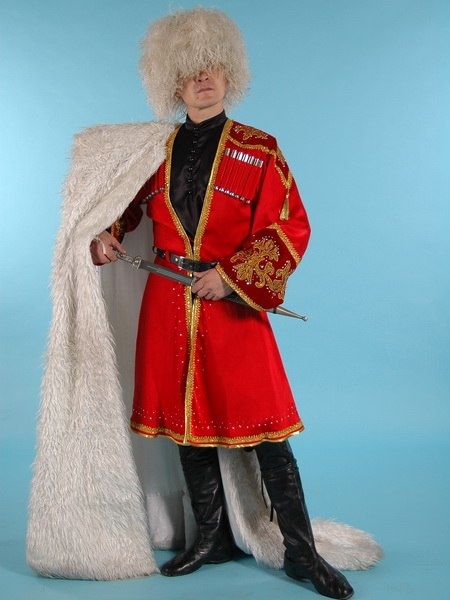
As shoes of men's national costume, Georgians were also widespread: koshi - among the wealthy estates, kalamani - among the poor. For the rich, there were still leather revenge on a flat sole, as well as tsags - leather boots, which were often decorated even with precious stones.
